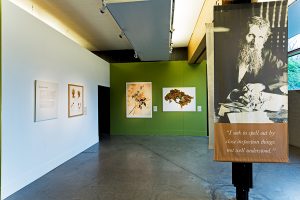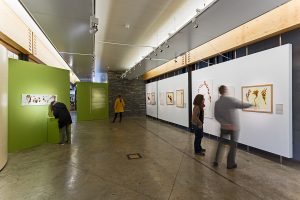
This year is marks the centenary of the death of one of America’s foremost conservationists; the Scots-born John Muir. Still remembered for his understanding of the need to preserve wilderness, Muir is a household name in the United States and is celebrated for his role in establishing the Yoesmite and Sequoia National Parks.
First and foremost however, Muir liked to be thought of as a Botanist and Nature’s Beloved Son, the current exhibition in the John Hope Gateway (until 25 January), features photographs of his extensive herbarium. Curated by Muir scholar Bonnie Gisel, the exhibition features a fascinating combination of two technologies: the collecting and drying of herbarium specimens, a technique which has not changed for centuries, and modern digital image manipulation. The images were created by photographer Stephen Joseph, and they enable the viewer to see the plant as Muir would have seen it when he placed it in the press.
Not everyone will approve of the virtual liberties that Stephen Joseph has taken with these historic specimens, including enlarging them considerably above life size, enhancing flower colour, and rearranging and adding labels and ephemera, but the result is undeniably beautiful. They also give an original insight into the botanical interests of a man who is better known for helping to create America’s national parks but was always, at heart, a botanist.
The Nature’s Beloved Son exhibition by Bonnie Gisel and Stephen Joseph is presented in partnership with East Lothian Council and will be in the John Hope Gateway from until 25 January 2015, 10am to 3.45pm. The exhibition includes a short documentary about making the exhibition and admission is free.


